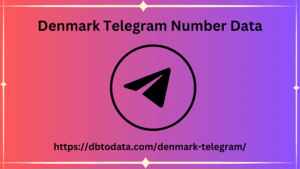Post by amirmukaddas on Mar 14, 2024 7:22:45 GMT 1
Welcome to Pop Up Mag, the site dedicated to all the latest news and insights on the world of marketing and communication, especially digital. For today's post we talk to you about sales techniques , and specifically about a method that marketers know very well: we are talking about the AIDA model , an acronym for Attention-Interest-Desire-Action. This theory, developed at the end of the 19th century by Elias St. Elmo Lewis, is still used today by many companies. Let's see what this model consists of: welcome to Pop Up! AIDA method: origins The AIDA Method was born at the end of the 19th century , specifically in 1898 by Elias St. Elmo Lewis who was the first to present this sales theory, which was enlightening for the time. Subsequently this was also taken up by EK Strong in the 1920s. Since the 1960s it has been re-presented as one of the key theories for organizing one's advertising campaigns . In fact, advertisers of the time relied on this methodology to organize advertising for client companies. Even today this theory is studied in universities and is the basis of other, more complex theories on the study of the consumer and his habits .
In fact, over time we started from this theory to develop others because we noticed an excessive simplicity in designing the behavior of the average consumer, especially when selling the product, a more complex mechanism than the theory reveals. In recent years, for example, there has been an improvement in this model thanks to Christian Betancur who called his " BAIFDASV Model " ( NAICDASE in Spanish ), which highlights that for the customer the process does not end at the purchase of the product, but in the Satisfaction of the Need and the Evaluation of the product/service purchased. In Denmark Telegram Number Data this theoretical model, Trust plays a key role. But now let's see what the AIDA model consists of. Continue reading this interesting post by Pop Up Mag! AIDA method: explanation AIDA, as previously mentioned, is an acronym that stands for Attention-Interest-Desire-Action. Therefore the model starts by capturing the attention of the target of potential customers and then ends with the Action , i.e. the purchase of the product/service. In the middle we have Interest and Desire, which must be stimulated through advertising action, capable of producing the desired effect.

But let's see, step by step, the entire process: Attention, in English Awareness. In this case the advertisement must capture the attention of the consumer, who every day is exposed to an ever-increasing number of direct and indirect advertisements, and only a part of this is able to influence him. In fact, over time the ability of advertising to attract attention is increasingly reduced, due to the excessive number of stimuli to which the customer is subjected on a daily basis; Interest , from the English Interest , is managing to ignite the consumer's interest and capture their desire, which then turns into desire; Desire, Desire , where the consumer's projection to identify with the product/service itself (and what it will allow the consumer to be once obtained in its availability) prevails, and to thus want to take possession of it; Action , Action , which takes the form of purchasing the product/service.
In fact, over time we started from this theory to develop others because we noticed an excessive simplicity in designing the behavior of the average consumer, especially when selling the product, a more complex mechanism than the theory reveals. In recent years, for example, there has been an improvement in this model thanks to Christian Betancur who called his " BAIFDASV Model " ( NAICDASE in Spanish ), which highlights that for the customer the process does not end at the purchase of the product, but in the Satisfaction of the Need and the Evaluation of the product/service purchased. In Denmark Telegram Number Data this theoretical model, Trust plays a key role. But now let's see what the AIDA model consists of. Continue reading this interesting post by Pop Up Mag! AIDA method: explanation AIDA, as previously mentioned, is an acronym that stands for Attention-Interest-Desire-Action. Therefore the model starts by capturing the attention of the target of potential customers and then ends with the Action , i.e. the purchase of the product/service. In the middle we have Interest and Desire, which must be stimulated through advertising action, capable of producing the desired effect.

But let's see, step by step, the entire process: Attention, in English Awareness. In this case the advertisement must capture the attention of the consumer, who every day is exposed to an ever-increasing number of direct and indirect advertisements, and only a part of this is able to influence him. In fact, over time the ability of advertising to attract attention is increasingly reduced, due to the excessive number of stimuli to which the customer is subjected on a daily basis; Interest , from the English Interest , is managing to ignite the consumer's interest and capture their desire, which then turns into desire; Desire, Desire , where the consumer's projection to identify with the product/service itself (and what it will allow the consumer to be once obtained in its availability) prevails, and to thus want to take possession of it; Action , Action , which takes the form of purchasing the product/service.
